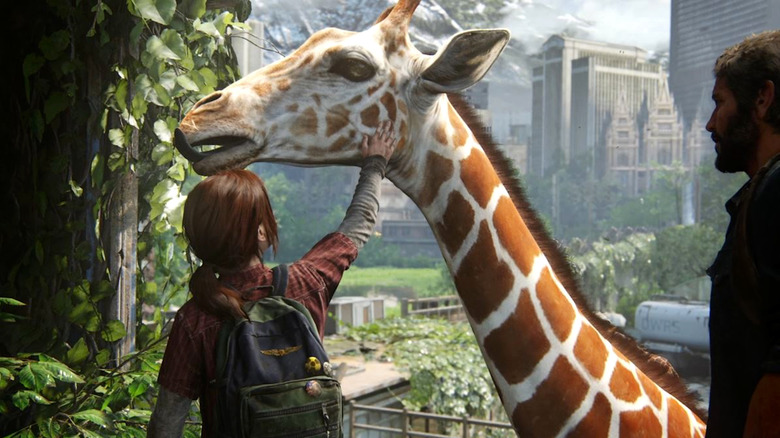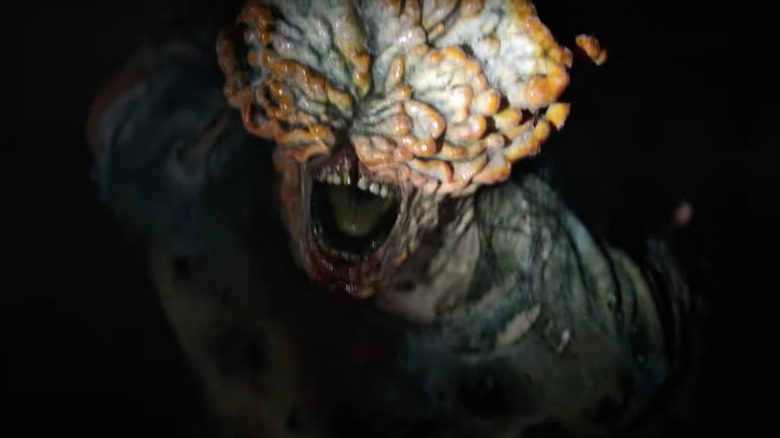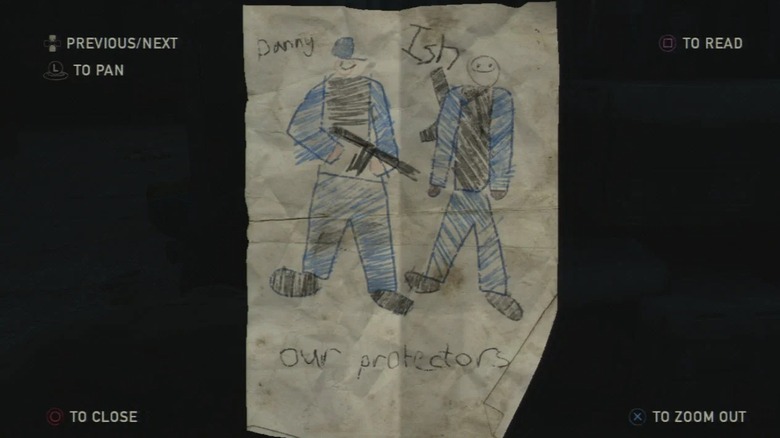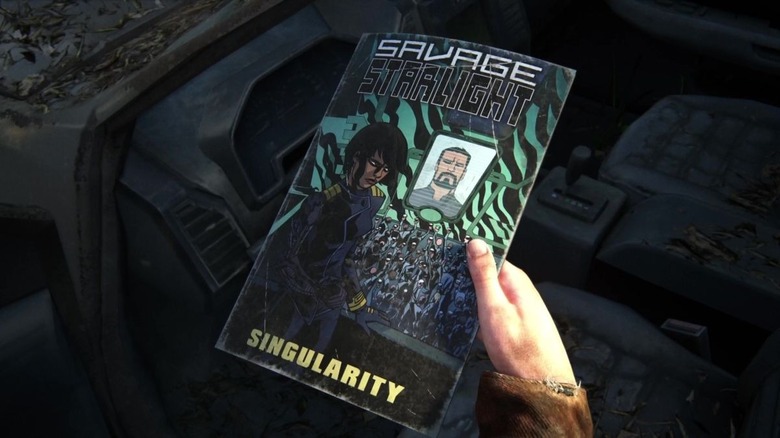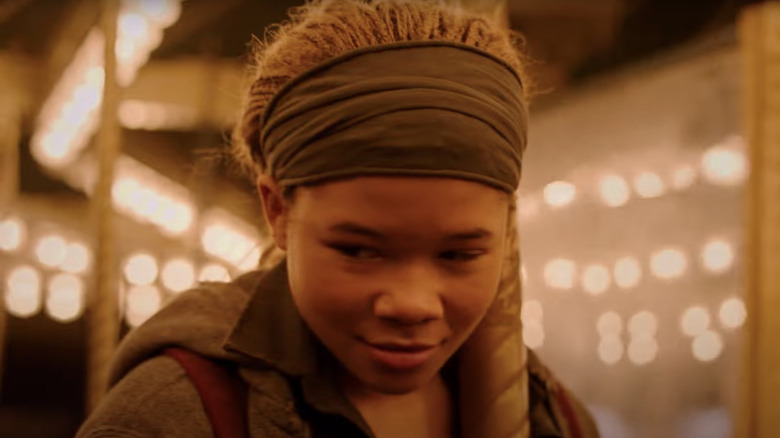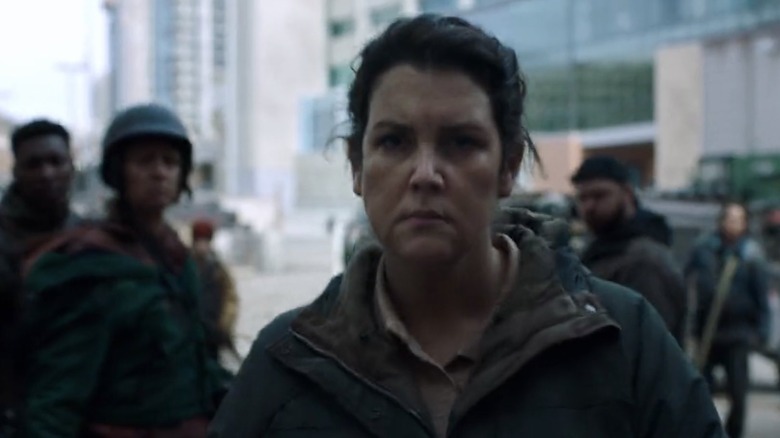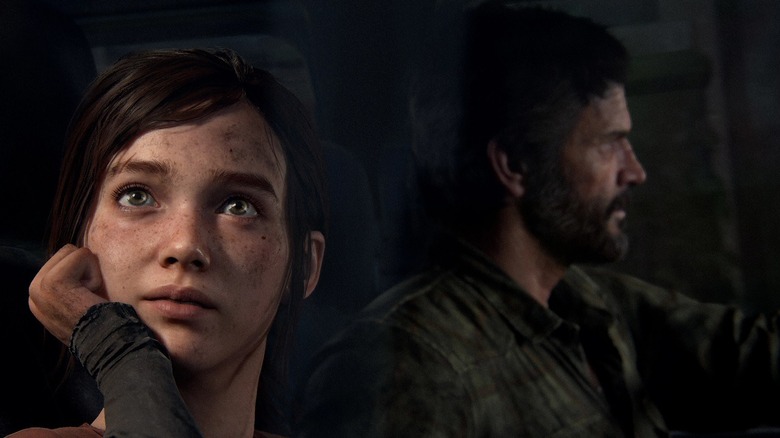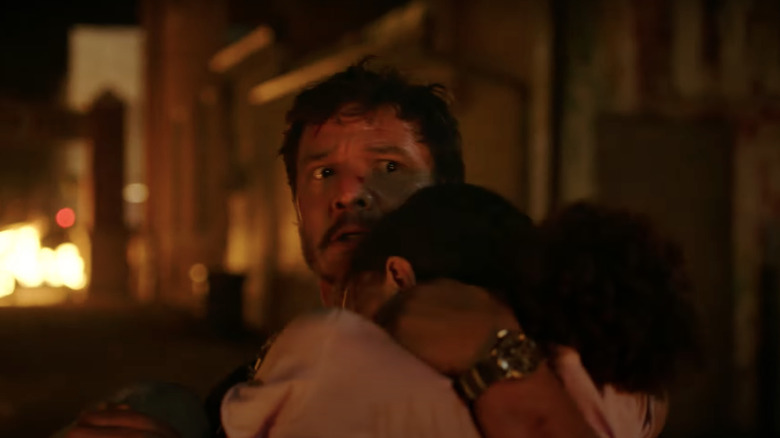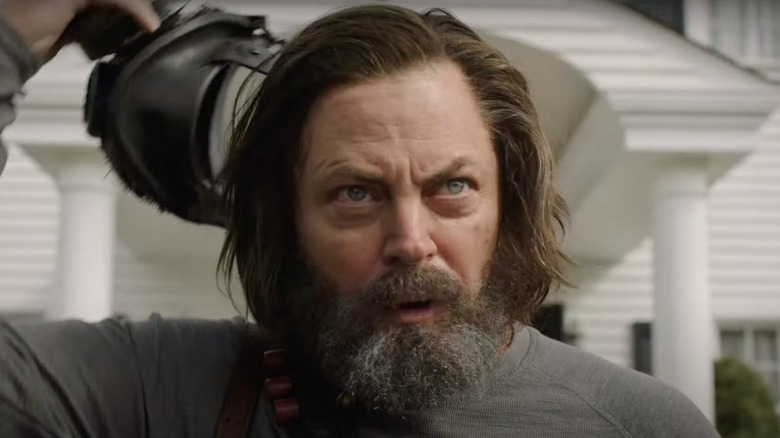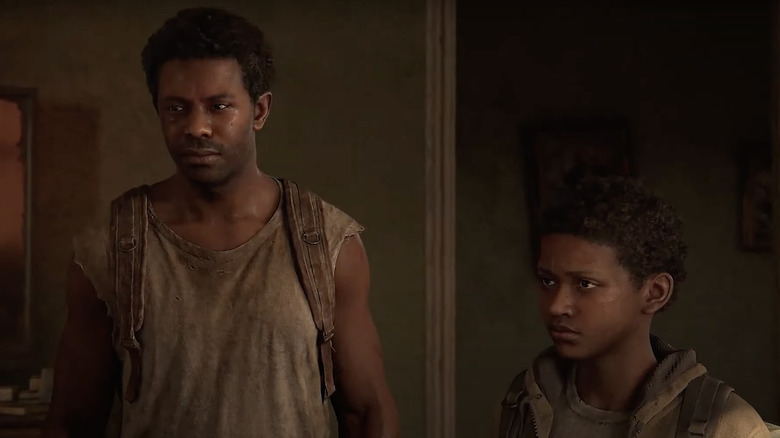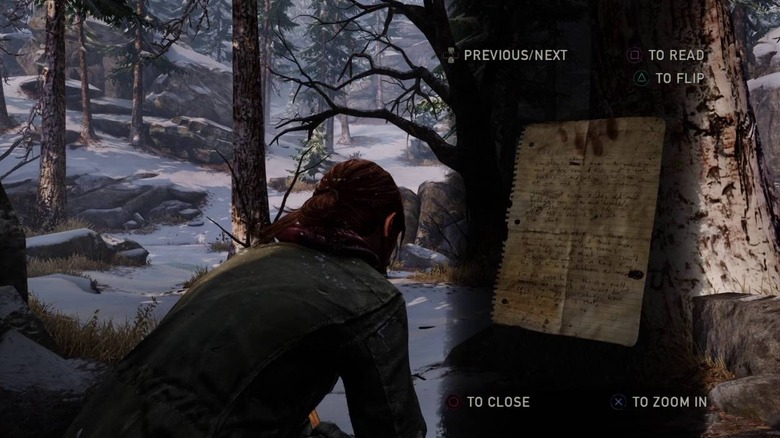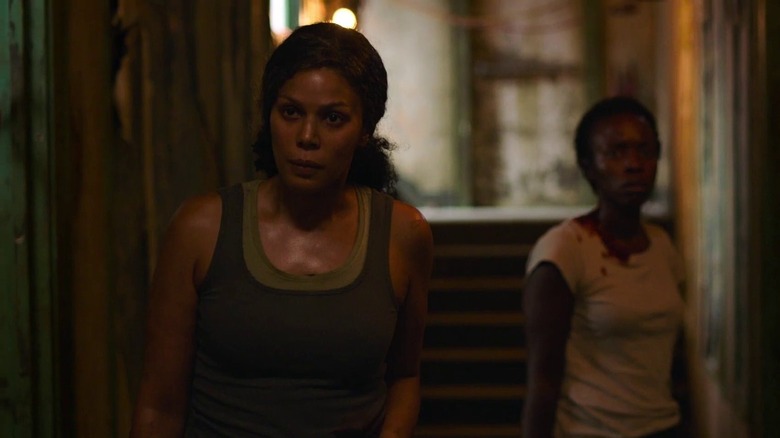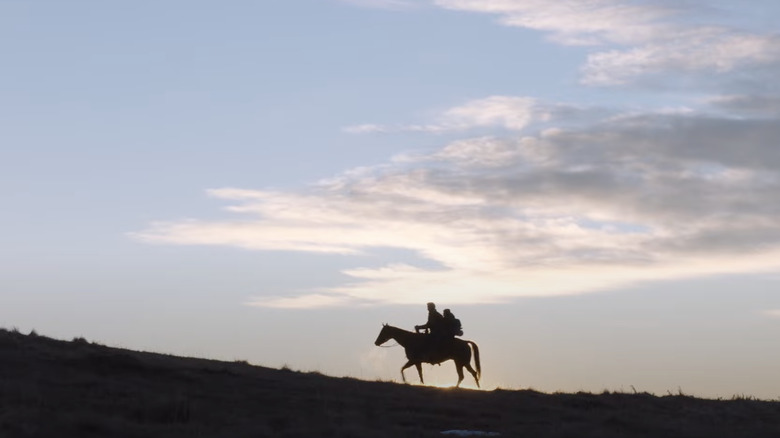12 Things We'd Like To See In HBO's The Last Of Us
HBO has finally released its first trailer for its adaptation of "The Last of Us," and there's lots to unpack for fans of the 2013 game. "The Last of Us" is one of the most influential video games of the 21st century, a swan song farewell to the PlayStation 3, and a reminder to the industry of what games are capable of as a medium for storytelling. Naturally, there's a lot of pressure on the HBO show to deliver that same experience to a broader audience. Thankfully, Neil Druckmann, the creative director and writer of both "The Last of Us" games, is creatively involved with the HBO adaptation and has reassured many fans that one of the goals is to preserve the integrity of the game's story. With Pedro Pascal and Bella Ramsey playing Joel and Ellie, there is a great promise to this series that could set it apart from previous video game adaptations.
However, translating a 15-20 hour video game into a 10-episode season sounds like no easy task. Considering a majority of those hours are directly interactable gameplay moments that cannot easily be translated into compelling television, the show has the perfect opportunity to expand the scope of the narrative while still staying true to the spirit of the game.
Without further ado, here are 12 things that we'd like to see in HBO's adaptation of "The Last of Us."
More types of infected
In the original game, there were four known stages of the Cordyceps infection that made up the enemy types the player interacts with. The game defines Runners, Stalkers, Clickers, and Bloaters, respectively in order of strength and the amount of time a victim has been exposed to the mind-controlling fungus. As an infected ages, fungi sprout all over their body and eventually bloom through their own skulls — an exciting opportunity for the make-up team of this adaptation to create some nasty prosthetics.
While there's lots of room for creativity with just the pre-established infected groups, "The Last of Us Part II" introduced us to Shamblers, a new infected group that has specifically mutated due the humid and damp climate of Seattle, the sequel's main setting.
Considering the first game's story is a full journey across the United States, it would be exciting to see the different locales of Joel and Ellie's story revisited with more infected. If that's too much to ask for, perhaps even region-specific variants of the same groups — mutated to thrive in different habitats. It would make the already well conceived dystopian world of "The Last of Us" feel more tangible and real in a live-action setting.
Ish's Story and Other Memorable Notes
"The Last of Us" reveled in one of modern gamings environmental storytelling cliches: collectible lore notes. Conceptually, it's quite silly to picture zombie apocalypse survivors journaling and then scattering their thoughts all over the place while fighting for their lives, but with the proper suspension of disbelief, "The Last of Us" excelled at keeping these extra bits of worldbuilding as unobtrusive and engaging as possible.
As a show that is promising itself to be one of the first faithful and good live action video game adaptations, it would be an interesting choice to translate some aspects of gameplay into the show. The section of the game that takes place within the Pittsburgh sewers is one setting where this could work.
Ish is a character that is never shown on screen, but his journal entries throughout the sewer level make up one of the more compelling background narratives in the game; a tragic story of a man trying to build a safe community for the disheveled families of the broken suburbs. No, the show shouldn't halt in favor of highlighting this mostly disconnected narrative, but it would be true to the spirit of the game to make use of background elements like the set design to subtly allude to what happened to Ish's community and its children. "The Last of Us" game made every level feel lived in and authentic. I hope to see that same thoughtful approach to the production design of the show.
Savage Starlight, and other in-universe pop culture
Speaking of collectibles, throughout "The Last of Us" there's a series of science-fiction comic books the player can collect for Ellie called "Savage Starlight." Each issue has strikingly beautiful art as well as blurbs that sometimes thematically resonate with Joel and Ellie's journey. In fact, one the game's most memorable catchphrases, "endure and survive," originates from this in-universe comic, first quoted by Ellie after an action sequence. "It's what the hero says after a big battle!"
"Savage Starlight" and other in-universe media like Twilight parody "Dawn of the Wolf" or the "Mortal Kombat" tribute "The Turning" give the player a great amount of insight into what pop culture was like before the Cordyceps pandemic, and it also humanizes Ellie in a relatable, nerdy way. Though she's a hardened survivor who has spent her entire life on the run, she is also a kid with dorky interests. The moments she engages Joel in her pun books or muses about how she always wanted to play video games are also crucial in breaking up with moments of dread and despair..
It would be a shame if these things didn't translate into the HBO show in some fashion. While there are no collectibles or optional dialogue trees in this new medium, the show can still slow down the pace and focus on these unique worldbuilding details that help make this story stand out.
Ellie's life before Joel in the Boston QZ
The opening act of "The Last of Us" follows Joel and his partner Tess (played by Anna Torv in the adaptation) and their life as bounty hunters, navigating their way through the Boston Quarantine Zone. The player only gets a taste of what an active QZ is like as the game quickly has our lead characters escape through the border, but through optional lore and collectibles we come to understand that these Federal Disaster Response Agency (FEDRA) run zones are the remnants of the United States military. In order to delve into the story's politics, the player must do their homework.
One way to make daily life in the apocalypse more of a presence could be to incorporate the prequel comic, "The Last of Us: American Dreams" into the show. "American Dreams" follows a day in Ellie's life before she meets Joel — the day she was transferred into the Boston QZ, about a year before the events of the game. The comic shows Ellie's admittance into a military boarding school, the beginnings of her relationship with Riley (played by Storm Reid in the adaptation), and a slice of life look into childhood in the apocalypse.
"The Last of Us" game mostly never strays away from Joel's perspective, but knowing that Ellie and Riley's story will be covered in this series, it could be beneficial to set up these characters and the perspective shift to Ellie in the Winter chapters early. If anything because it will further cement that for these girls, the post-apocalyptic world is all they've ever known.
FEDRA, Fireflies, and other factions
In the universe of "The Last of Us," many parts of society have broken off into their own factions as a means for survival. We know that FEDRA is built out of the remnants of the U.S. military, and that the rebel group the Fireflies was created in an effort to restore government systems in response to the oppression taking place in QZs. Everything deeper about the history of this conflict is mostly told in broad strokes.
However, we know there are other rebel factions out there. In optional conversations, Joel will recount memories of civil unrest in QZs around the states, some less organized and much more violent than the Fireflies. "The Last of Us Part II" introduced the Washington Liberation Front (WLF), a resistance group that successfully took control of the Pacific Northwest, partly composed of ex-Fireflies.
Again, Joel and Ellie's adventure from the Boston QZ to Salt Lake City covers a lot more ground, and this show is their opportunity to fill in any gaps they've created in expanding the world since the sequel game. It looks like Mazin and Druckmann are heading in this direction, since the trailer for HBO's "The Last of Us" highlighted Melanie Lynskey as Kathleen, an original character for the show, described as "the ruthless leader of a revolutionary movement in Kansas City." Judging by the fact that she is not explicitly labeled as part of the Fireflies, it will be interesting to see whether another faction will play in this story, and if it will help color in the scale of post-apocalyptic America.
Troy Baker and Ashley Johnson in substantial roles
In June 2022, it was announced that the original Joel and Ellie, Troy Baker and Ashley Johnson, are among the HBO show's already stacked cast. This point is admittedly more of a want than a need, but the motion-capture and VA work that these two actors gave as Joel and Ellie were incredibly impactful, career-defining performances.
Sure, the 3D models rendered by Naughty Dog were meticulously detailed and lifelike, but Baker and Johnson made them truly come to life in a way that set the standard for storytelling in video games in 2013. While we're confident Pedro Pascal and Bella Ramsey can deliver, the task in front of them is far from easy. How do you capture the spirit of these recent, beloved performances and still set yourself apart?
As the world of "The Last of Us" expands in this adaptation, there is surely no dearth of roles Baker and Johnson can embody, but one hopes their place in the series will be memorable enough to tribute their time as Joel and Ellie, and will hopefully act as a thoughtful passing of the torch to Pascal and Ramsey.
Joel & Tommy's bloody history
In the intro of "The Last of Us," we're introduced to Joel's little brother, Tommy Miller (played by Gabriel Luna in the adaptation). When we see him again after the big time skip of the game, it's obvious they have a fraught relationship. Joel intends to hand Ellie off to Tommy and let him finish the job of delivering her to the Fireflies, a payback for the years Joel spent protecting Tommy in the early apocalypse. Tommy however, does not see his brother as a savior, and his time "surviving" with him has left him traumatized.
The exact details of Joel's violent past are mostly kept vague, but when fighting packs of hostile hunters throughout the game, Joel admits he's "been on both sides." Sure, there is mystique to the ambiguity of Joel's past, but one of the core ideas of "The Last of Us" is an unwavering amount of empathy for any person, bad, good or anywhere in between. We want to see Joel at his lowest; how much violence is Joel capable of in pursuit of protecting his clan, and by extension, what changes when he meets Ellie?
Tommy eventually found penance in becoming a Firefly for a while, then moving to Jackson to start a humble little community. As a direct character foil to Joel's negative character development, it would be great to see Tommy's "redemption" play out on screen and add more dimension to the Fall chapter of the story.
A deeper look into Bill and Frank's relationship
A common theme on this list is the desire to flesh out parts of the game's narrative and world that was previously shown between the lines. In an early section of "The Last of Us," the player meets Bill, a cranky and lone wolf smuggler who lives in his own abandoned town in the outskirts of Boston. He's an interesting character foil to Joel: a man who has once had "a partner" to survive with, but has closed his heart off to fend off for himself. He warns Joel about the dangers of becoming too attached, holding a mirror to Joel's own insecurities traveling with Ellie.
When the player digs into notes and optional conversations, they can find out that Bill's "partner" Frank was actually his lover who passed away, and they had a harsh falling out right before Joel and Ellie reached him. It completely reframes Bill and adds a layer of queer loneliness to his story, something that could truly shine if its given the right amount of attention in the adaptation.
Luckily, alongside Nick Offerman's casting as Bill, we know Murray Bartlett will be in the HBO show playing Frank as well. Considering Frank is never shown alive in the original game, it's safe to say Mazin and Druckmann have more to say about these characters. While "The Last of Us" games don't shy away from portraying LGBTQ+ characters, this is an opportunity to revisit a memorable gay character with more confidence and depth.
Justice for Henry and Sam
One of the earliest gut punches in "The Last of Us" comes in the form of Henry and Sam, two brothers making their way through Pittsburgh who end up temporarily traveling with Joel and Ellie. Through their companionship, Joel and Ellie develop a unique trust in the brothers, and Ellie gets to finally interact with someone around her own age with Sam.
Joel and Henry share little tidbits about what the world was like before the apocalypse with the kids, while Ellie and Sam wax on about faith, god, and life after death. Typical kid stuff. The pair are deeply loveable characters, but their role in the narrative means their time is cut all too short. As two of the only significant Black characters in the story, it always felt like there was more to be seen and done with them.
In the HBO show, it was announced with the casting of Lamar Johnson and Keivonn Woodard that their origins will be altered for the show. Instead of Pittsburgh, Joel and Ellie will encounter the brothers in Kansas City. Whatever the reason for this change is, we're hoping it will allow Henry and Sam to serve a stronger narrative and thematic bite and a longer presence compared to what they have in the game.
The note from Ellie's mother
In the one portion of the game where the player is able to play as Ellie, there is a great amount of detail in her backpack and its contents. Riley's firefly pendant, her switchblade, the comics, and Walkman she passes the time with — but one of the more special collectibles is the letter Ellie's mother, Anna, wrote to her child before she died.
The dire situation Ellie finds herself in the Winter chapter is one of the most harrowing parts of the game, but should the player sit down and read this note, they will find one of the main sentiments of "The Last of Us" summarized in a few lines: "I'm not going to lie, this is a pretty messed up world. It won't be easy. The thing you always have to remember is that life is worth living! Find your purpose and fight for it."
While that line and the closing "Make me proud, Ellie!" remark is enough to make a player cry, the note also reveals that Marlene, the leader of the Fireflies, and the person who gave Joel his mission to deliver Ellie to Salt Lake City, made a promise to look after Ellie in Anna's absence. "There's no one in this world I trust more than her. When the time comes she'll tell you all about me. Don't give her too much of a hard time. Try not to be as stubborn as me."
This note simply must make it into the final game in some capacity, as it gives so much more emotional stakes to Joel's entire mission, as well as informs Ellie's scrappy fighter persona. She is her mother's daughter.
A deeper, fleshed out Marlene
Ultimately, that connection to Ellie's mother would also strengthen Marlene and her presence within the story. The original actress, Merle Daindridge, will be reprising her role in the live-action adaptation. While Marlene is only seen in the first and last acts of the game, the part she plays as the leader of the Fireflies is crucial.
We'll spare the details for those who have potentially not experienced the game's ending before, but as important moral questions are raised by its climax, we want the show to address some nuances that remain in the game's optional lore. Yes, Joel's journey cements him as a surrogate father to Ellie, but it's crucial to remember that Marlene is just as much as a crucial figure in Ellie's life — she's essentially Ellie's godmother.
Seeing more of that relationship on screen will help add layers of depth upon what's already a strong canvas. The online arguments over the game's climax and its moral questions are already intense; but in true spirit of the original game and its high, thought provoking ambitions, we hope the show only adds even more complexity as the story finds a wider audience.
More existential, quiet moments
There is no shortage of zombie slaying, crafting, and upgrading in the gameplay of the PS3 classic, and sure, that's all plenty of fun — but what makes "The Last of Us" different and special compared to all other games out there is its focus on quiet, character moments. Fighting off hordes of infected is cool, but the game is better remembered for the majesty of its famous giraffe scene even more. One of the most engaging and additive moments in "Left Behind" is pressing triangle to make Ellie read puns out of a joke book, it invokes a feeling of joy and tranquility for the player to participate in with its characters.
This is ultimately why we believe, out of every game to live action media adaptation out there, that "The Last of Us" has the biggest chance to succeed as an HBO show. As a season of TV, there is time for these moments of quiet, character driven beats. While it remains to be seen how effective they will play with the sense of interactivity gone, at least it will be truer to tone than a botched and reduced 2 hour film.
"The Last of Us" and its longform narrative, its deep commitment to its characters and their existence within this world, and its equally dire and optimistic tone makes the game's story one of the best in the history of video games, and hopefully with the right amount of love and attention to detail, this can remain true in television.
